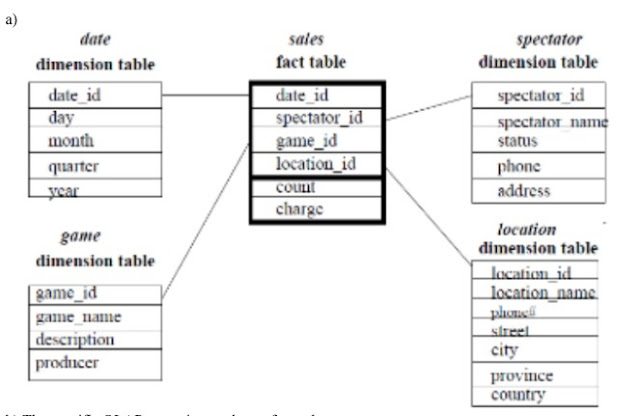Describe different types of modern organizational structres.
MODERN ORGANIZATIONAL STRUCTURES
Traditional organizational structures are less flexible because of which organizations fail to adapt in changing environments. The less flexible and more permanent nature of the organization structure increases the financial liability of the organization. Thus, organizational structures are modernized with greater flexibility and multiple responsibilities. Following modern organizational structures are common in practice:
1. Work team organization structure
A team is a collection of people having complementary skills. The team concept is taken as important means of organizing work activities. It breaks down the departmental barriers and decentralized the decision-making authority to the level of work teams. Teams are formed at operating levels to improve productivity and enhance the performance of employees. Autonomous teams are effective to reduce stress and promote an environment of innovation and creativity. Problem-solving teams, self-managed teams, cross-functional teams, quality circles, virtual teams, etc. are the types of teams.
Three types of team structures (i.e. project team, the task force team, and the venture team) are commonly used in organizations.
Project team: Project is any mission assignment that needs to be accomplished or solved within time limits and standard quality. In order to accomplish the project work, a team of various specialists is prepared. Project teams are self-directed and self-sufficient work groups. Such project teams can be dissolved after the accomplishment of predetermined goals. Such teams are prepared for special activities like setting new technology in the organization, solving any special technical problem that occurred during the process, initiating a new venture, etc.
The task force team: Taskforce is a group of top executives and specialists from different functional areas of an organization. Such teams are prepared to solve any specific problems or to initiate new ventures. Such teams are formed with the objectives of creativity, open communication, cross-functional specialization, conflict resolution, a collaborative approach to problem-solving, etc. Task force normally focuses on every problem of the organization irrespective of to project team. It is of temporary nature.
The venture team: For introducing a new venture, product, or new business, venture teams are prepared. Such teams have the responsibility of providing suggestions, or formulation of guidelines and strategies to start above mentioned purposes. But, venture teams can be suffered from different types of problems like reporting problems, source or funding departments for the venture team, chances of influence by the vested interest of members, and problems of coordination.
Advantages
- Team organizational structures can be more flexible so any type of change can be introduced easily.
- Communication can be effective.
- Better decisions can be made with the joint efforts of members.
- Self-directing team members facilitate low supervision and control in the organization.
Disadvantages
- There can be problem of over specialization in decision making.
- Decision can be delayed if common consensus cannot be formed.
- Interdependency can be increased. So, result cannot be as per expectation.
- Control may not be effective as members are supposed to be self controlled and directed.
2. Network organization structure
If the management of an organization receives different services from outside to perform the functions, it creates a virtual organization system. In this situation, the organization is free to select any contractor to make any part of a particular product in different places. It is also known as outsourcing. These organizations create a network of relationships that allows them to contract out subsidiary functions. But, they should focus on care functions, strategic issues, and coordination.
The network structure is comparatively a newer organizational structure that is viewed as less hierarchical i.e., flatter, more decentralized, and more flexible than other structures. In this structure, managers coordinate and control relations that are both internal and external to the firm. The network structure is based on the social network of interactions. At the industry level, complex networks can include technology and innovation networks that may span several geographic areas and organizations. At the organizational level, social networks can be intra-organizational or inter-organizational representing either formal or informal relationships to accomplish the tasks focusing to achieve organizational goals. From a management perspective, the network structure is unique among other organizational structures that focus on the internal dynamics within the firm.
Advantages of network structure
- The network structure is more agile compared to other structures.
- Communication in network structure flows freely, possibly opening up more opportunities for innovation.
- The network structure is decentralized which helps slow down layers in communication.
- It has a wider span of control.
- It facilitates the bottom-up flow of decision-making.
Disadvantages of network structure
- This structure is a more fluid structure which can lead to a more complex set of relationships in the organization.
- Lines of accountability may be less clear.
- There can be reduced control over operational success.
3. 360-degree structure
The 360-degree organizing is a new way of thinking which elaborates the effectiveness of team structure. Under this philosophy, each manager takes accountability, responsibility, and central decision-making authority. Each member shares the ideas, views, and feedback with each member under the structure so that cooperation, coordination, and mutual understanding can be increased. Each member gets a professional opportunity given to the coworkers to provide 360-degree feedback about the performance of their fellow employees.
Each member bears mutual accountability while they have individualized responsibility. This means each member in the structure holds fixed responsibility but each member should have answerability on the success and failure of the organization. They do not follow the scalar chain of command strictly but they develop self-understanding.
The 360-degree organizing is mostly focused on the contribution of the employee and their skills along with their competencies. It is a balanced way to view the actual performance of employees in the area of teamwork, leadership, interaction, interpersonal communication, mutual and self-defined contribution, mutual accountability, and sincerity of work habits of the employees.
Advantages of 360-degree organizing
This system provides a comprehensive view of the accountability, responsibility, and performance of employees.
The different ideas coming from different persons combined provide a more accurate 360-degree assessment.
The feedback from colleagues helps strengthen the self-development process of the employee.
It also increases the responsibility and alertness of employees towards their clients.
More persuasive opinions can be gathered from different participants.
Not only top managers but colleagues are also responsible for the assessment of overall performance.
Participation of employees increases their motivation.
Disadvantage of 360-degree organizing
The process is very lengthy, complex, and takes a lot of time to reach a conclusion.
A lot of effort has to be placed in order to train the employee to effectively use 360-degree organizing.
Chances for overlapping and duplication remain high if a higher level of mutual accountability cannot be developed.
OR,
Modern Organizational Structures
1. Team-Based Structure
A team comprises a group of people linked in a common purpose. Teams normally have members with complementary skills, knowledge, educational level, and experience. A team generates synergy through a coordinated effort which allows each member to maximize their strengths and minimize their weaknesses. A team attempts to achieve objectives through collective performance. It operates through collective leadership, and decisions are also taken collectively. A team is composed of employees from different units or departments. Under team structure, different cross-functional teams are formed for the implementation of the plan.
Three types of team structures (i.e. project team, the task force team, and the venture team) are commonly used in organizations.
Project team: Project is any mission assignment that needs to be accomplished or solved within time limits and standard quality. In order to accomplish the project work, a team of various specialists is prepared. Project teams are self-directed and self-sufficient work groups. Such project teams can be dissolved after the accomplishment of predetermined goals. Such teams are prepared for special activities like setting new technology in the organization, solving any special technical problem that occurred during the process, initiating a new venture, etc.
The task force team: Taskforce is a group of top executives and specialists from different functional areas of an organization. Such teams are prepared to solve any specific problems or initiate new ventures. Such teams are formed with the objectives of creativity, open communication, cross-functional specialization, conflict resolution, a collaborative approach to problem-solving, etc. Task force normally focuses on every problem of the organization irrespective of to project team. It is of temporary nature.
The venture team: For introducing a new venture, product, or new business, venture teams are prepared. Such teams have the responsibility of providing suggestions, or formulation of guidelines and strategies to start above mentioned purposes. But, venture teams can be suffered by different types of problems like reporting problems, source or funding departments for the venture team, chances of influence by the vested interest of members, problems of coordination.
Advantages
- Team organizational structures can be more flexible so any type of change can be introduced easily.
- Communication can be effective.
- Better decisions can be made with the joint efforts of members.
- Self-directing team members facilitate low supervision and control in the organization.
Disadvantages
- There can be problems of over-specialization in decision-making.
- Decisions can be delayed if a common consensus cannot be formed.
- Interdependency can be increased. So, the result cannot be as per expectation.
- Control may not be effective as members are supposed to be self-controlled and directed.
2. Network organization structure
A network structure is also called a virtual structure or non-structure or shadow structure. It is a series of independent business units linked together by computer information system that designs, produces, and markets products. It is most useful when the environment of a firm is unstable. Innovation and quick response are the foundation of network structure. Under this, manufacturing is subcontracted or outsourced to other organizations in low-cost locations around the world. It provides flexibility for an organization to cope with rapid technological change and environmental dynamism. As a result, network structure allows the organization to concentrate on its core competencies.
Ricky W. Griffin" A virtual (network) organization is one that has little or no formal structure."
Stephen P. Robbins "Network organization involves a type of team that uses technology to link physically dispersed members in order to achieve a common goal. "
3. 360-degree structure
360-degree feedback/structure is a system in which employees receive confidential, anonymous feedback from the people who work around them not just their immediate supervisor. This can include managers, peers, reporting staff members, customers, and even suppliers. A mixture of about eight to twelve people fill out an anonymous online feedback form that asks questions covering a broad range of workplace competencies. The person receiving feedback also fills out a self-rating form that includes the same survey questions that others receive their forms.






Comments
Post a Comment